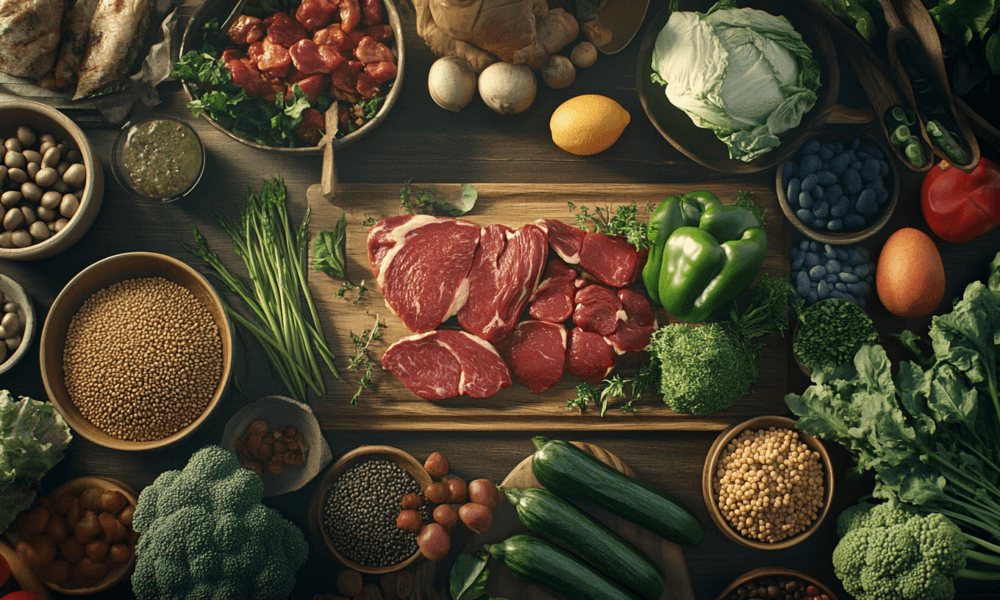Sustainable Food Choices: How Our Diets Are Changing for the Planet
The connection between what we eat and the health of the planet has become more evident than ever before. As concerns over climate change, biodiversity loss, and environmental degradation grow, more people are turning to sustainable food choices to minimize their ecological footprint. The shift towards plant-based diets, regenerative agriculture, and environmentally friendly practices in food production represents a significant movement towards a more sustainable future. This article delves into how our diets are changing for the planet, exploring the emerging trends and choices that are helping to protect our environment.
The Environmental Impact of Food Production
Food production is a major contributor to environmental issues such as greenhouse gas emissions, deforestation, water pollution, and soil degradation. Conventional agricultural practices often involve heavy use of synthetic fertilizers, pesticides, and water resources, which can negatively impact the environment. To tackle these problems, individuals, companies, and farmers are increasingly turning to sustainable food practices that prioritize ecological balance.
- Greenhouse Gas Emissions: The agricultural sector is responsible for a significant share of global greenhouse gas emissions. Livestock farming, in particular, contributes high levels of methane, a potent greenhouse gas. The production and transportation of food also contribute to carbon dioxide (CO2) emissions.
- Land and Water Use: Conventional agriculture requires vast amounts of land and water, leading to deforestation, habitat destruction, and depletion of water resources. Livestock farming, for instance, uses more land and water compared to growing crops for direct human consumption.
- Biodiversity Loss: Intensive farming practices often lead to biodiversity loss, as habitats are destroyed and ecosystems are disrupted. Sustainable practices like regenerative agriculture can help restore biodiversity and improve soil health.
Plant-Based Diets: A Key to Sustainability
Plant-based diets have gained significant traction as a sustainable choice that can reduce the environmental footprint of food production. More people are choosing plant-based meals or adopting flexitarian, vegetarian, or vegan diets to help protect the planet. Let’s explore how plant-based diets can benefit the environment and why they are becoming a popular choice.
1. Lower Greenhouse Gas Emissions
One of the primary reasons people are moving towards plant-based diets is the lower carbon footprint associated with plant-based foods. Producing plant-based proteins such as beans, lentils, and tofu requires significantly fewer resources compared to raising livestock for meat.
- Livestock vs. Plants: Studies have shown that producing animal protein generates two to ten times more greenhouse gas emissions than producing plant-based protein. By reducing meat consumption, individuals can make a substantial impact on reducing emissions.
- Meat Alternatives: The rise of meat alternatives, such as plant-based burgers and lab-grown meat, provides an opportunity for people to enjoy familiar flavors and textures without the high environmental cost of traditional meat production.
2. Reduced Land and Water Use
Shifting to a more plant-based diet can help reduce the amount of land and water needed for food production. Growing crops directly for human consumption is far more efficient than growing crops to feed livestock.
- Land Savings: Livestock farming takes up around 77% of all agricultural land while providing only 18% of the world’s calories. By reducing the demand for meat, large areas of land can be freed up for other purposes, such as reforestation or regenerative agriculture.
- Water Efficiency: Plant-based foods generally require much less water than animal products. For example, producing 1 kg of beef requires approximately 15,000 liters of water, while 1 kg of pulses only requires around 4,000 liters.
3. The Rise of Plant-Based Products
The food industry has seen a surge in plant-based products that cater to a wide range of dietary preferences. From plant-based milks like almond, oat, and soy to meat substitutes made from pea protein, the availability of plant-based alternatives has made it easier for individuals to make sustainable choices without sacrificing flavor or nutrition.
- Plant-Based Dairy: Dairy alternatives have become increasingly popular, with oat milk and almond milk leading the market. These alternatives produce fewer greenhouse gas emissions and use less water compared to traditional dairy farming.
- Meat Substitutes: Companies like Beyond Meat and Impossible Foods have revolutionized the market for meat alternatives, offering products that replicate the taste and texture of meat while significantly reducing the environmental impact.
Regenerative Agriculture: Healing the Land
Regenerative agriculture is a sustainable farming practice that aims to restore soil health, promote biodiversity, and sequester carbon. It goes beyond the concept of sustainable farming by actively working to improve the ecosystem and repair the damage caused by conventional agricultural practices.
1. Restoring Soil Health
Healthy soil is essential for growing nutritious food, storing carbon, and maintaining biodiversity. However, conventional farming practices often degrade soil health through overuse of synthetic fertilizers and pesticides. Regenerative agriculture prioritizes practices that enhance soil fertility and increase the soil’s ability to store carbon.
- Cover Cropping: Planting cover crops helps prevent soil erosion, improve soil structure, and enhance nutrient content. Cover crops also provide a habitat for beneficial insects, which helps maintain ecosystem balance.
- Crop Rotation: Crop rotation is another practice that can improve soil health by alternating the types of crops grown on the same land. This prevents the depletion of specific nutrients and disrupts the cycle of pests and diseases.
2. Carbon Sequestration
One of the key benefits of regenerative agriculture is its ability to sequester carbon in the soil, helping to mitigate climate change. By using practices that increase organic matter in the soil, regenerative agriculture can pull carbon dioxide out of the atmosphere and store it in the ground.
- No-Till Farming: No-till farming is a regenerative practice that involves minimizing soil disturbance. This helps maintain the soil structure, promotes microbial activity, and enhances the soil’s ability to store carbon.
- Agroforestry: Agroforestry is the integration of trees and shrubs into agricultural systems. This practice not only helps sequester carbon but also provides a habitat for wildlife and improves the overall resilience of the farming ecosystem.
3. Promoting Biodiversity
Regenerative agriculture also emphasizes the importance of biodiversity in maintaining healthy ecosystems. Diverse crops, healthy soil, and natural pest control help create a resilient farming system that can withstand environmental stressors such as climate change.
- Polyculture: Unlike monoculture, which involves growing a single crop, polyculture involves growing multiple crops together, which improves soil health, reduces pest outbreaks, and enhances resilience to weather fluctuations.
- Wildlife Habitats: Regenerative farms often create habitats for wildlife by including buffer zones, hedgerows, and ponds, which contribute to increased biodiversity and healthier ecosystems.
The Role of Consumers and Businesses in Promoting Sustainable Food Choices
The shift towards sustainable food choices requires participation from all sectors of society—including consumers, businesses, and policymakers. By making informed choices and supporting environmentally friendly food practices, individuals and organizations can contribute to a healthier planet.
1. Consumer Choices
Consumers play a crucial role in driving demand for sustainable food products. By choosing plant-based meals, purchasing from farms that use regenerative practices, and reducing food waste, individuals can make a significant positive impact on the environment.
- Reducing Meat Consumption: Even reducing meat consumption by incorporating more meatless meals can make a difference. A growing number of people are adopting a flexitarian approach, where they reduce but do not entirely eliminate meat from their diets.
- Buying Locally and Seasonally: Supporting local farmers and buying seasonal produce can help reduce the carbon footprint associated with transporting food over long distances.
2. Businesses and Food Industry Initiatives
Businesses and the food industry also play a key role in promoting sustainable food choices. Many companies are making efforts to reduce their environmental impact by improving their supply chains, reducing packaging waste, and developing more plant-based products.
- Commitments to Sustainability: Food companies like Nestlé, Unilever, and Danone have made commitments to reduce their greenhouse gas emissions and source ingredients sustainably.
- Plant-Based Menu Options: Restaurants and food chains are also introducing more plant-based options to cater to changing consumer preferences. Fast-food giants like McDonald’s and Burger King have added plant-based burgers to their menus to meet the growing demand for sustainable choices.
Conclusion
The shift towards sustainable food choices is an essential step in protecting the environment and mitigating the impact of climate change. By embracing plant-based diets and supporting regenerative agriculture, individuals, businesses, and policymakers can work together to create a more sustainable food system that benefits both people and the planet. The rise of plant-based products, regenerative farming practices, and increased consumer awareness are all positive signs that our diets are changing for the better—creating a healthier and more resilient world for future generations.
Whether it’s opting for plant-based meals, supporting regenerative farms, or making more conscious choices about the food we consume, every action counts in the fight for a sustainable future. Together, we can make a difference and help build a food system that nourishes both people and the planet.




No Comment! Be the first one.